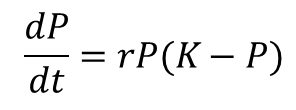Team:Montgomery Cougars NJUSA/Project/MathematicalModel
From 2014hs.igem.org
(Difference between revisions)
(→Mathematical Model) |
(MATH purpose) |
||
| Line 5: | Line 5: | ||
<center><u>Differential Growth Rate Modeling</u></center> | <center><u>Differential Growth Rate Modeling</u></center> | ||
| - | In order to obtain optimal results from each one of our experiments, the Montgomery iGEM team has undertaken the challenge of using differential calculus concepts to model the rates of growth of | + | ==Purpose== |
| + | In order to obtain optimal results from each one of our experiments, the Montgomery iGEM team has undertaken the challenge of using differential calculus concepts to model the rates of growth of protein. We seek to determine the amount of proteins expressed by the bacteria's gene. The quantity of protein yielded by the bacteria is especially important due to the exacting amount of protein necessary to effectively alter enough sebum molecules and cut off P. acnes's nutrient source. | ||
We expect the protein growth to model the logistic growth equation. <center>[[File:logisticgrowth.jpg|Logistic Growth]]</center> | We expect the protein growth to model the logistic growth equation. <center>[[File:logisticgrowth.jpg|Logistic Growth]]</center> | ||
Revision as of 18:26, 16 June 2014
Mathematical Model
Purpose
In order to obtain optimal results from each one of our experiments, the Montgomery iGEM team has undertaken the challenge of using differential calculus concepts to model the rates of growth of protein. We seek to determine the amount of proteins expressed by the bacteria's gene. The quantity of protein yielded by the bacteria is especially important due to the exacting amount of protein necessary to effectively alter enough sebum molecules and cut off P. acnes's nutrient source.
We expect the protein growth to model the logistic growth equation.
 "
"